Chances are you have a picture in your mind when the word “betta fish” is mentioned. Most of us think of small, colorful fish with ornate finnage.
If you are considering getting one of these fish, one aspect to plan for is how big they will get.
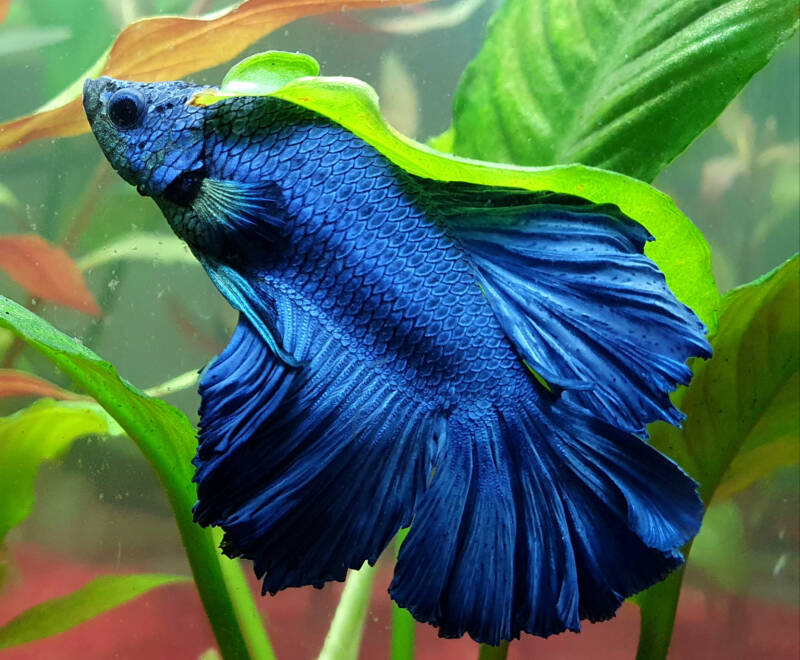
Knowing the ultimate size of the fish you are purchasing will help you determine the proper tank size.
You should know how big your betta fish will be when full-grown as well as how quickly they will grow to this size.
In this article, we will discuss the average adult betta fish length, growth rates, and how to help your betta achieve their full size.
[toc]
All Betta Fish Are Not the Same
Most of us are familiar with the ubiquitous Betta splendens. These fish have been bred in captivity for generations to achieve unique beauty and renowned temperament.
However, there are numerous betta species available in the aquarium trade.
These vary in size, so it is important to know which kind you are looking to purchase.
Most Betta Fish (Betta splendens)
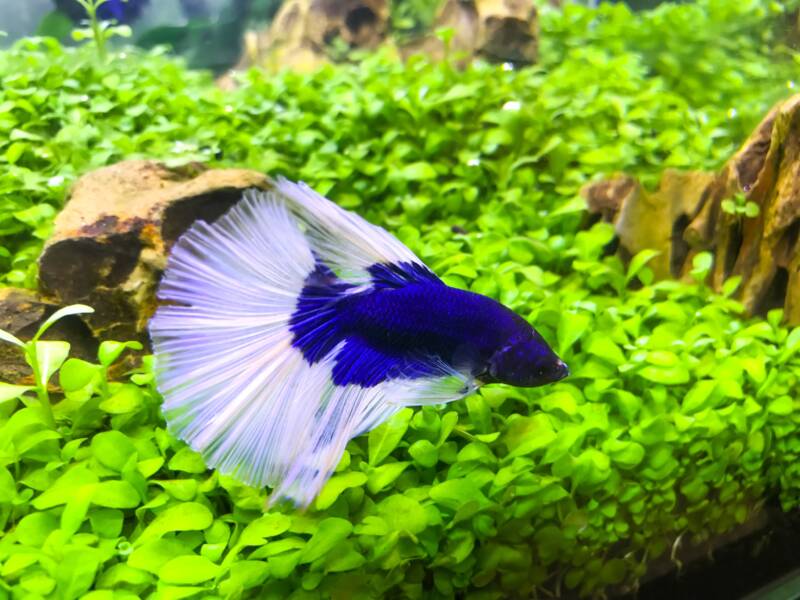
The betta fish you most often see, Betta splendens, and a host of similar species, reach an average length between 2.25 to 2.5 inches (6 to 6.3 cm).
They can range anywhere from two to 3.5 inches (5 to 9 cm) and rarely reach above that length.
These fish have incredible variation in coloration as well as fin shape and size.
Giant Betta (Betta anabatoides)
The largest betta species out there is called the giant betta. It reaches between four to five inches (10 to 13 cm) in length.
Wild Betta Fish
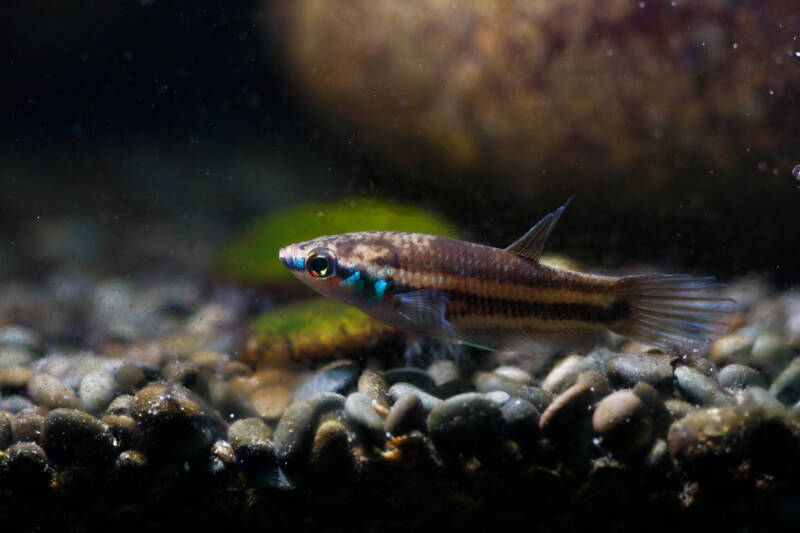
In the wild, betta species vary significantly in terms of their size and coloration.
While they do not have the ornate finnage of captive-bred species (those fins would be impractical for survival in the wild), they are nevertheless beautiful and are quite hardy fish.
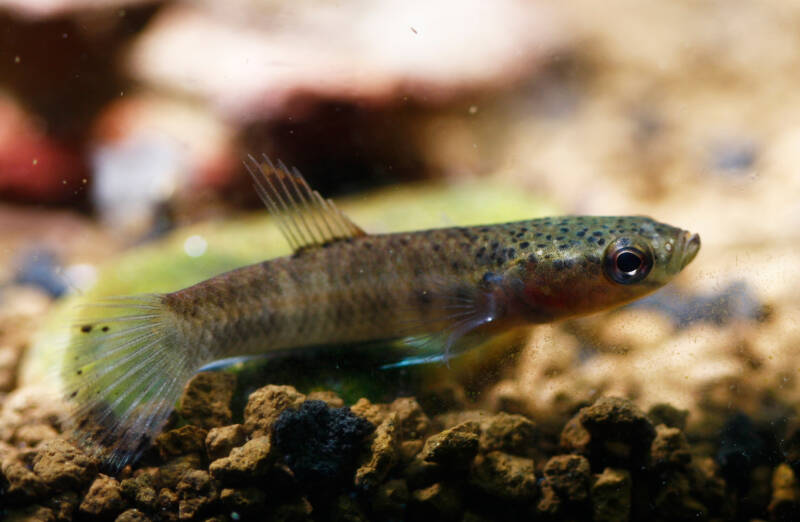
These fish have also not been bred with the aggressive nature of the domestic species, which can make them more suitable for a community tank.
They reach anywhere between 1.4 to four inches (3.6 to 10 cm) in length, depending on the species.
Size Difference by Sex

In general, a male and female betta will be about the same size body-wise, with the male of the species growing slightly longer and thicker in the body.
The generous fins of the male can give the appearance of an even larger size.
How Fast Do Betta Fish Grow?
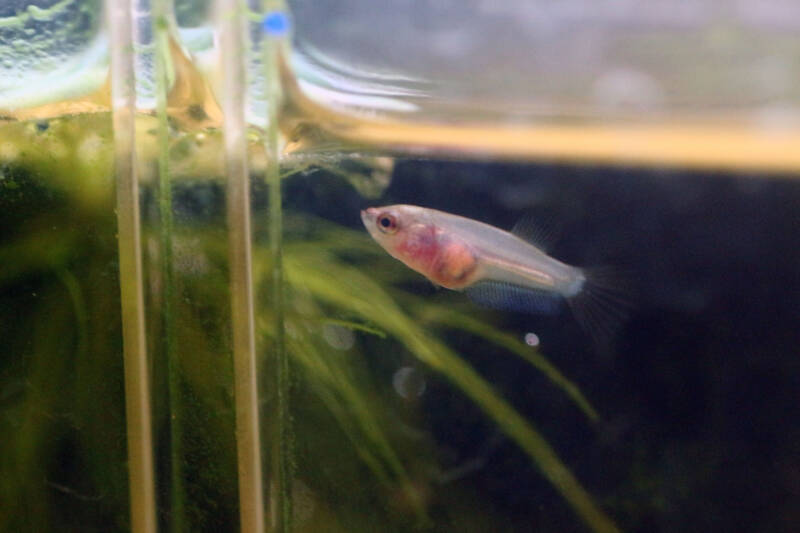
It does not take long for your betta fish to grow into an adult.
In a quick 10 weeks they go from just hatched to around 1.5 inches (3.8 cm) in length.
While this is half of their eventual size, bettas are considered to be adults at this time.
With this short timeframe, it is better to be prepared with a tank setup that will accommodate their adult length. This way, you will not have to acclimate your fish to a new tank environment as they grow.
The following table shows the average growth during each life stage:
| Fry | 24 to 48 hours old | 0.1 inch/0.3 cm |
| Juvenile | 2 to 3 weeks old | 0.6 to 1 inch/1.5 to 2.5 cm |
| Young Fish | 7 to 10 weeks old | 1.5 inches /4 cm |
| Adult (sexually mature) | 3 to 5 months old | 2 to 3 inches /5 to 7.5 cm |
How to Get Your Betta to Grow to Full Size

Aside from genetic influences, the ultimate size your betta fish will reach depends heavily on the care you provide.
Water quality, nutrition, and tank size play key roles in maximizing your betta’s growth.
Water Quality
Bettas are warm-water fish and need a consistent temperature to thrive.
Install a heater and thermometer in your tank to keep it at a consistent 76 to 80°F (24 to 26°C).
Do not place the tank near a window where sunlight can rapidly warm the water.
Similarly, placing the tank near an air conditioning vent is also a poor choice.
Temperatures that remain below 76°F (24°C) and above 85°F (29°C) are harmful to your betta.
Regularly test your water to ensure the pH stays between 6.5 and 7.5 and ammonia levels are 0 ppm.
Any measurements outside of these parameters should be slowly returned to normal, as rapid changes can negatively impact your fish.
Nutrition
Betta fish need a diverse diet in order to thrive. Skip the standard flakes and invest in quality betta pellets.
Supplement their diet with fresh, frozen, or freeze-dried protein sources. Some favorites include bloodworms and brine shrimp.
It is important to not overfeed your betta.
These fish are happy to eat what is put in front of them, so spread their meals out to include two to three small servings a day. This will allow them to digest their food and not become bloated.
Wild bettas may be more difficult to train to accept pellet foods. In this case, you would need to lean toward providing live or frozen foods.
Tank Size
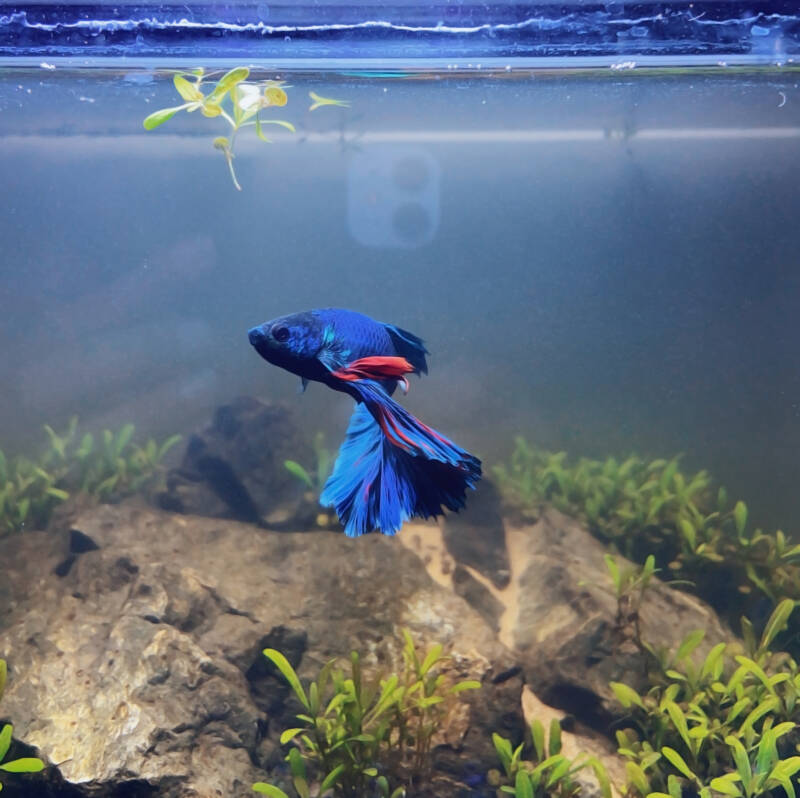
Will tank size impact your betta’s growth? Yes, but not in the way many people think.
Fish do not “grow to fit the size of their tank,” as myth would have it.
What is really at play here is the suitability of the environment to the fish’s growth.
Fish kept in too small of a tank are subject to higher stress levels, which weakens their immune system and leaves them susceptible to disease.
Do not make the mistake of thinking that your betta can live in a tiny bowl.
The following are recommended betta tank sizes:
- Single, male betta: 5 to 10 gallons (20 to 40 l)
- Female betta sorority (4 to 5 females): 20 to 30 gallons (80 to 120 l)
- Male and female betta: 15 gallons (60 l)
Plan to increase the tank size by five gallons or 20 l for each additional fish.
Closing Thoughts
Know the ultimate size of the fish you are looking to purchase. Getting your betta fish to reach their maximum potential size comes down to providing the right care.
Optimize their environment and feed them well to give them the best opportunity to grow.
Have we answered all your questions? If not, send us a message below.
